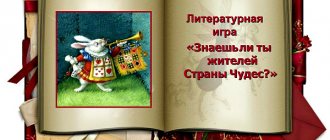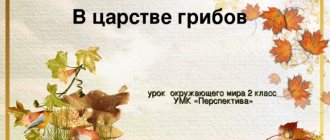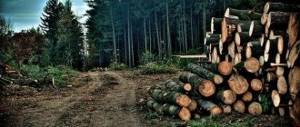History of the fishery
Men and women created various dishes (pots, bowls, jugs, etc.), and in their free time they sculpted simple figures for children who came to their parents for production. The products were never in great demand, so they were rarely exported for sale or exhibited at fairs. The Kargopol toy was made for children, and to use up excess material that was not useful for other products.
The traditions of the craft have remained virtually unchanged to this day, however, the Kargopol toy ceased to be in demand in the mid-20s, and a decade later production ceased altogether.
In 1930, several craftsmen in the village were engaged in the creation of simple clay figurines, who considered it not a job, but a hobby. By 1950, there was only one craftswoman left, creating toys. She fired them at home, in her own stove, and to give them strength, she covered them with coals, waiting for the figures to heat up. The craftswoman used old paints for painting. The appearance of the products changed later, when the craftswoman became known outside her area and kind people began to send her new materials. Then the Kargopol figurines became more colorful, although the style did not change.
Now her works are exhibited in many museums of folk crafts, and in Kargopol a museum of Kargopol clay toys has been created, where the best exhibits of pottery from this area are collected.
Models for coloring
Writing on the board: The fairy-tale world of Kargopol.
Teacher: In the north, in the ancient Russian city of Kargopol, Arkhangelsk region, there is one of the centers for the production of clay toys. In the old days, Kargopol was a widely known and large cultural center of the Russian North. Now these are protected places where original Russian culture, arts and crafts are still preserved.
For a long time, in the surrounding villages near Kargopol they made whistles, figurines, and depicted what they saw.
(The teacher shows presentations “Kargopol toy”, Kargopol toys. Draws attention to the features of the Kargopol toy.)
- This is a sedate bearded peasant who sat down to rest after work, or a fisherman on a boat, a hunter in the forest... There are few details in all the figures, the master emphasizes only the most important things. People are depicted as strong, squat, men almost always have a beard.
— Kargopol peasant woman greeting guests with bread and salt or washing clothes. Almost everyone was depicted at work. But holiday themes are also not forgotten - “quadrille”, playing the accordion or balalaika. As a rule, the toys of Kargopol masters are single, sometimes two or three characters, connected by a single plot.
— There are also fantastic toys. Kargopol masters humanized animals and endowed them with symbolic meaning. So we got Polkan the hero, a bear with a little tail, the Sirin bird, push and pull.
— The painting of toys is unique. The old Kargopol toy was dim and faded. To decorate it, craftswomen used chalk and stove soot—they didn’t know real colors back then. Even today one can feel the northern restraint and the severity of the region in the painting.
(End of the presentation. The teacher demonstrates Kargopol toys, posters, albums, etc.)
Question: What colors can be seen on Kargopol toys?
Answer: The colors are dim, muted: pink, green, pale yellow-orange, lilac-blue.
Question: What are the patterns of Kargopol masters made of?
Answer: Stripes, rings, arcs, ovals, dots, sprouts.
Teacher: Each element of the pattern has its own meaning, its own meaning. So circles, rings with a cross inside are a symbol of the Sun; arcs and brackets - a symbol of the Earth, arable land; dots and twigs are symbols of grain and sprouts. Why do you think these symbols were especially loved by northern masters?
Answer: It’s cold in the north, they always wait for the arrival of spring, the Sun, and warmth. They are waiting for the time when they can sow and grow bread again.
Teacher: And now you and I, guys, will try to bring spring and the Sun closer - for a while we will become folk craftsmen and paint a model of the Kargopol toy. Try to work so that your heart is warm and joyful!
(On the board are posters or presentations of step-by-step painting of the Kargopol toy).
In the process of independent work, the teacher provides children with complete creative freedom, providing individual assistance. You can turn on soft folk music. At the end of the lesson there is an exhibition. The children, together with the teacher, choose the best works. The teacher does not forget to praise each student and note what they did best in the toy.
Literature:
Nagibina M.I. Natural gifts for crafts and games. - Yaroslavl: Academy of Development, 2000.
Art for children. Kargopol toy.-M.: Mozaika-Sintez, 2005.
Khvostov A.S. Arts and crafts at school. M.: Education, 1981.
Types of Kargopol toys
Rustic themes predominate in Kargopol toys. Local masters were more willing to portray ordinary Russian people - peasants who work in the fields; plowmen and sowers relaxing during their lunch break; women washing clothes and babysitting children. Typically, the people in these pottery objects are very hard workers: they are sowing a field, feeding livestock, preparing food, harvesting crops, or performing household chores. But there was also a place for festive themes, here craftsmen depicted dancing couples, merry musicians with harmonicas and playful children enjoying the festivities.
They also created animals, both real and fictional. The most famous character is the half-horse, half-man Polkan, depicted in military uniform with orders. There were other heroes of ancient Russian legends, for example, the two-headed horse or the bird Sirin.
Some real animals also received some kind of humanization; they were given clothes, a home, and even given musical instruments. The figures included all the fauna familiar to Russian people - bears, moose, rams, cats, dogs, birds, horses.
Kargopol toys were not worked out in detail; many elements of clothing or accessories were depicted schematically. The outfits were bright and noticeable. Women were often dressed in long sundresses, their hair was braided, beads were hung around their necks, and they were given either a bundle with a baby or dishes of food in their hands. Male images had a thick beard, a cap or hat for protection from the sun, a painted shirt, loose trousers and high boots with low heels.
The images of traditional Kargopol craft are filled with hidden meaning. For example, the figurine of an ordinary woman was a symbol of the Earth, fertility, and a nurse-mother. It was she who awakened nature from hibernation, gave a rich harvest in the fall and saved her in times of famine. And the bear was considered the owner of the forest, who could either tear an unwanted traveler into pieces, or generously bestow forest gifts and lead him to the exit from the thicket. Horned animals, like deer or ram, symbolized the sky and the sun. According to many legends that influenced pottery, horns light the way for people and lead them to the truth. Polkan, who was a cross between a man and a horse, was the protector of the human people from all troubles and misfortunes. In any danger, he covered the people with his broad chest, repelling the attacks of fate.
History of the Kargopol fishery
Pottery folk craft in the Kargopol region originated in the 11th–13th centuries: archaeologists found fragments of dishes and other household items here. Red clay was mined in these places; it was well suited for both hand modeling and working on a potter's wheel. This craft reached its peak in the 19th century.
At first, pottery was not the main occupation of the Kargopol peasants and served only as an additional source of income. The craftsmen sat in a circle in the winter, when there was no need to work in the field. The finished dishes were taken to markets and fairs. Over the winter, a skilled potter could make from 400 to 800 pots and earn up to 15 rubles for them - a considerable sum for the 19th century.
Kargopol toy. Photo: rusvelikaia.ru
Kargopol toy. Photo: rusvelikaia.ru
Kargopol toy. Photo: rusvelikaia.ru
Everyone made dishes in Kargopolye - men, women, children starting from 8-9 years old. And various figures were sculpted from the remains of clay. The craftsmen did not particularly value them: such toys cost very little, most often they were simply given away to children. Some traders painted whistles with natural paints and used them as a kind of advertising: a child, seeing a bright toy on the counter or hearing an iridescent whistle, pulled his parents towards it: “Buy, buy a whistle!” And at the same time, adults could purchase a pot, kneading bowl or jug needed for the household.
It is unknown what medieval Kargopol toys looked like. Archaeologists managed to find only one figurine of a horse, which was made around the 15th–16th centuries. From it we can only judge that at that time “bobs” (as toys are called here) were not painted, they were distinguished by a simple form and conventional details. The first mentions of “classical” figures date back to the 70s of the 19th century.
Manufacturing technology
The initial stage is preparation of the material. Each master chooses his own method: someone initially dries the clay, and then turns it into powder and mixes it with water; someone first kneads it into a dough and dries it; Some people do without drying at all.
The figures are molded from a single piece, sometimes with the addition of additional elements. Kargopol toys are characterized by simplicity in execution, so the clay is given the most simple shapes in the form of a silhouette of a person or animal. The image of the hero is conveyed in a generalized, somewhat primitive way.
After shaping, firing follows, which many craftswomen did in home ovens. After heat treatment, the product had to be placed in a thick flour solution. The burnt flour created bizarre dark patterns on the surface, which were later covered with paints. This technology gave the figure relief and volume.
The final stage is painting the product. Previously, craftsmen mixed coloring pigment with chalk, which gave the toy a light shade.
From bird to centaur: the most popular figures
Mostly single figures were depicted: women in wide bell skirts, men with thick beards, domestic and wild animals - deer, bears, horses, cows, birds. At the beginning of the 20th century, story-based clay toys appeared that showed scenes from village life: hunting and fishing, washing clothes and working in a forge, harvesting and holiday festivities.
Many of the figurines retained a flavor of ancient beliefs. For example, a woman with a baby or a bird in her hands resembled ancient images of Mother Earth and personified fertility and prosperity. The figurine of a bear, a popular hero of folk tales, songs and legends, had approximately the same meaning.
Kargopol toys. Photo: rusvelikaia.ru
Kargopol toys. Photo: rusvelikaia.ru
Kargopol toys. Photo: rusvelikaia.ru
Some toys depicted fantastic creatures. The most famous of them is Polkan, or Polihan, a kind of centaur, the upper part of whose body is human, the lower part is horse (in the oldest versions - canine). In epics, Polkan often appeared as a kind hero, a defender of the weak, poor and offended.
Another unusual creature sculpted by Kargopol craftsmen is Tyanitolkay, who looks like a two-headed horse. One of his heads was painted black, the other white, and a clay horseman was placed between them. A deep meaning was invested in such a toy: the white side of Tyanitolkai personified light, goodness and life; black - evil, darkness and death. The horseman between them embodied the eternal tossing of the human soul, but some figures still depicted him clinging to the white half of Tyanitolkai - as if he had made a choice.
Painting of a Kargopol toy
Products from the Arkhangelsk region cannot boast of having a rich color palette. The most commonly used shades were red, green, yellow and blue. Preference was given to bright and saturated colors.
The figurines always had a pattern - people received it as decoration for clothes, and animals had the ornament applied to their horns or limbs. The pattern itself was simple and primitive: simple and wavy lines, circles, triangles, floral patterns. There was also symbolism from ancient Rus': a symbolic image of the sun, sky and moon. There were also elemental signs such as fire, earth and water.
Lesson summary “Kargapol toy”
Lesson topic:
Kargopol toy.
Lesson objectives:
1. To introduce the remarkable craftsmanship and art of the Russian North, with the peculiarities of painting Kargopol clay toys.
2. Formation of skills in creating unity of form and decor of a toy, composition of the rhythm of color spots and elements, developing creativity and imagination.
3. Foster a love for Russian folk art. Give children the opportunity to feel like a folk craftsman.
The lesson scenario is dedicated to the remarkable skill and art of the people of Russia; it will help to better understand the spirit and culture of the people of our country.
Equipment:
- For students:
- model for coloring "Kargopol toy"
- gouache
- brushes
- water jar
- paper
- napkin
- poke (cotton swab)
- simple pencil
- eraser
- For the teacher:
- Kargopol toys
- posters "Kargopol toy"
- presentation "Kargopol toy"
Lesson plan (45 min):
- Organizing time. Checking readiness for the lesson. 3-5 min.
- Theoretical part. Introductory conversation with demonstration of Kargopol toys, posters, presentations. Explanation of the painting sequence. 10-15 min.
- Practical part. Self-painting of a model for coloring. 15-20 min.
- Final part. Summarizing. 5 minutes.
During the classes:
Writing on the board: The fairy-tale world of Kargopol.
Teacher:
In the north, in the ancient Russian city of Kargopol, Arkhangelsk region, there is one of the centers for the production of clay toys. In the old days, Kargopol was a widely known and large cultural center of the Russian North. Now these are protected places where original Russian culture, arts and crafts are still preserved.
For a long time, in the surrounding villages near Kargopol they made whistles, figurines, and depicted what they saw.
(The teacher shows presentations “Kargopol toy”, Kargopol toys. Draws attention to the features of the Kargopol toy.)
- This is a sedate bearded peasant who sat down to rest after work, or a fisherman on a boat, a hunter in the forest... There are few details in all the figures, the master emphasizes only the most important things. People are depicted as strong, squat, men almost always have a beard.
— Kargopol peasant woman greeting guests with bread and salt or washing clothes. Almost everyone was depicted at work. But holiday themes are also not forgotten - “quadrille”, playing the accordion or balalaika. As a rule, the toys of Kargopol masters are single, sometimes two or three characters, connected by a single plot.
— There are also fantastic toys. Kargopol masters humanized animals and endowed them with symbolic meaning. So we got Polkan the hero, a bear with a little tail, the Sirin bird, push and pull.
— The painting of toys is unique. The old Kargopol toy was dim and faded. To decorate it, craftswomen used chalk and stove soot—they didn’t know real colors back then. Even today one can feel the northern restraint and the severity of the region in the painting.
(End of the presentation. The teacher demonstrates Kargopol toys, posters, albums, etc.)
Question:
What colors can be distinguished on Kargopol toys?
Answer:
The colors are dim, muted: pink, green, pale yellow-orange, lilac-blue.
Question:
What are the patterns of Kargopol masters made of?
Answer:
Stripes, rings, arcs, ovals, dots, sprouts.
Teacher:
Each element of the pattern has its own meaning, its own significance. So circles, rings with a cross inside are a symbol of the Sun; arcs and brackets - a symbol of the Earth, arable land; dots and twigs are symbols of grain and sprouts. Why do you think these symbols were especially loved by northern masters?
Answer:
It’s cold in the north, they’re always waiting for the arrival of spring, the sun, and warmth. They are waiting for the time when they can sow and grow bread again.
Teacher:
And now you and I, guys, will try to bring spring and the Sun closer - for a while we will become folk craftsmen and paint a model of a Kargopol toy. Try to work so that your heart is warm and joyful!
(On the board are posters or presentations of step-by-step painting of the Kargopol toy).
In the process of independent work, the teacher provides children with complete creative freedom, providing individual assistance. You can turn on soft folk music. At the end of the lesson there is an exhibition. The children, together with the teacher, choose the best works. The teacher does not forget to praise each student and note what they did best in the toy.
Literature:
Nagibina M.I. Natural gifts for crafts and games. - Yaroslavl: Academy of Development, 2000.
Art for children. Kargopol toy.-M.: Mozaika-Sintez, 2005.
Khvostov A.S. Arts and crafts at school. M.: Education, 1981.




